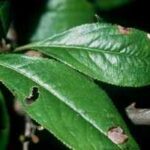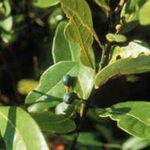Want trees that will stretch on for a mile? Below are good selections to help you choose the best one for your application from those that get above 30 feet tall. Planting instructions and thorough descriptions of each tall growing tree are given.
Acer negundo L. (Boxelder)
Kingdom Plantae – Plants
Subkingdom Tracheobionta – Vascular plants
Superdivision Spermatophyta – Seed plants
Division Magnoliophyta – Flowering plants
Class Magnoliopsida – Dicotyledons
Subclass Rosidae –
Order Sapindales –
Family Aceraceae – Maple family
Genus Acer L. – maple
Species Acer negundo L. – boxelder
This tree has rapid growth and prefers full sun. It will get up to 50 feet high and have up to a 40 foot spread. It has yellow green flowers in droop racemes. It’s a good shade tree. It’s the only maple with a compound leaf but this variety isn’t as sweet as the sugar maple. Its sap can make syrup.
Betula nigra L. (River birch)
Kingdom Plantae – Plants
Subkingdom Tracheobionta – Vascular plants
Superdivision Spermatophyta – Seed plants
Division Magnoliophyta – Flowering plants
Class Magnoliopsida – Dicotyledons
Subclass Hamamelidae –
Order Fagales –
Family Betulaceae – Birch family
Genus Betula L. – birch
Species Betula nigra L. – river birch
Known for its paper-like bark, this deciduous tree will grow up to 100 feet tall. It is resilient to flood damage and is good in the tough clay soils found in Georgia. Intolerant to shade, remember to give this a sunny location. Game birds love the birch’s seeds. This is a beautiful tree specimen in the yard with its unique paper bark.
Carpinus caroliniana Walt. (Musclewood, Blue Beech, American Hornbeam)
Kingdom Plantae – Plants
Subkingdom Tracheobionta – Vascular plants
Superdivision Spermatophyta – Seed plants
Division Magnoliophyta – Flowering plants
Class Magnoliopsida – Dicotyledons
Subclass Hamamelidae –
Order Fagales –
Family Betulaceae – Birch family
Genus Carpinus L. – hornbeam
Species Carpinus caroliniana Walt. – American hornbeam
American Hornbeam is a deciduous tree growing up to 30-40 feet. It will flower from March to May and fruit from August to October. While it is forage for rabbits and squirrels, it is primarily considered a “weed tree”.
Carya alba (L.) Nutt. ex Ell. (Mockernut Hickory)
Kingdom Plantae – Plants
Subkingdom Tracheobionta – Vascular plants
Superdivision Spermatophyta – Seed plants
Division Magnoliophyta – Flowering plants
Class Magnoliopsida – Dicotyledons
Subclass Hamamelidae –
Order Juglandales –
Family Juglandaceae – Walnut family
Genus Carya Nutt. – hickory
Species Carya alba (L.) Nutt. ex Ell. – mockernut hickory
This tree gets up to 50-80 feet tall and has a 2 foot diameter in the trunk area. It loves full sun and acidic soil. There is good fall color with this hickory and the wood has been used for furniture, flooring veneer, and has a high fuel value. Its hickory nut fruits are edible, and wildlife loves them. You may see tiny green flowers on this tree in early spring, but is not known as a tree for discernable flowers.
Carya aquatica (Michx. f.) Nutt. (Water Hickory, Bitter Pecan)
Kingdom Plantae – Plants
Subkingdom Tracheobionta – Vascular plants
Superdivision Spermatophyta – Seed plants
Division Magnoliophyta – Flowering plants
Class Magnoliopsida – Dicotyledons
Subclass Hamamelidae –
Order Juglandales –
Family Juglandaceae – Walnut family
Genus Carya Nutt. – hickory
Species Carya aquatica (Michx. f.) Nutt. – water hickory
This tree gets up to 65 feet tall and one foot wide. It has a narrow crown and prefers partial shade with wet soil. Its flowers are yellow and its fruits are nuts in thin husks. The seeds have a bitter taste, giving the name “Bitter Pecan”. Its bark is shaggy and scaly and lends texture to the tree. Its wood is difficult to work with and is used normally as a fuel source.
Carya glabra (P. Mill.) Sweet (Pignut Hickory)
Kingdom Plantae – Plants
Subkingdom Tracheobionta – Vascular plants
Superdivision Spermatophyta – Seed plants
Division Magnoliophyta – Flowering plants
Class Magnoliopsida – Dicotyledons
Subclass Hamamelidae –
Order Juglandales –
Family Juglandaceae – Walnut family
Genus Carya Nutt. – hickory
Species Carya glabra (P. Mill.) Sweet – pignut hickory
This rapid growing hickory prefers sun or partial shade and will have great yellow fall color. It will mature to a height of 50-60 feet tall and a spread of 25-35 feet. It has bitter nut fruits that are egg shaped and warty. It is a medium size tree for landscaping and has a round crown. Its wood is strong and durable and makes a good ornamental tree. Squirrels will eat the nuts and use the tree as a den.
Carya ovata (P. Mill.) K. Koch (Shagbark Hickory)
Kingdom Plantae – Plants
Subkingdom Tracheobionta – Vascular plants
Superdivision Spermatophyta – Seed plants
Division Magnoliophyta – Flowering plants
Class Magnoliopsida – Dicotyledons
Subclass Hamamelidae –
Order Juglandales –
Family Juglandaceae – Walnut family
Genus Carya Nutt. – hickory
Species Carya ovata (P. Mill.) K. Koch – shagbark hickory
This particular hickory has richly aromatic leaves and the wood is good for meat smoking in barbeques. It will get up to 70-90 feet tall with a spread of 30-40 feet. It is a slow grower. Known as the best tasting of the hickory nuts; one mature tree will ripen 2-3 bushels a year. It is shade tolerant and can tolerate normal drought. Plant this in sun or partial shade for maximum growth. This is bold and ornamental in the landscape.
Celtis laevigata Willd. (Sugarberry)
Kingdom Plantae – Plants
Subkingdom Tracheobionta – Vascular plants
Superdivision Spermatophyta – Seed plants
Division Magnoliophyta – Flowering plants
Class Magnoliopsida – Dicotyledons
Subclass Hamamelidae –
Order Urticales –
Family Ulmaceae – Elm family
Genus Celtis L. – hackberry
Species Celtis laevigata Willd. – sugarberry
This tree has moderate to rapid growth and prefers sun. Growth gets up to 60-80 feet tall and has a 2-3 foot trunk diameter. It has modest yellow green fall color and orange to blue black fruits. The fruits will attract birds and wildlife. Use this as a shade or accent tree in your landscape.
Cladrastis kentukea (Kentucky Yellowwood)
Kingdom Plantae – Plants
Subkingdom Tracheobionta – Vascular plants
Superdivision Spermatophyta – Seed plants
Division Magnoliophyta – Flowering plants
Class Magnoliopsida – Dicotyledons
Subclass Rosidae –
Order Fabales –
Family Fabaceae – Pea family
Genus Cladrastis Raf. – yellowwood
Species Cladrastis kentukea (Dum.-Cours.) Rudd – Kentucky yellowwood
While yellowwood will get up to 50 feet tall, it will only get around 1 ½ feet across.This medium tree has a short trunk and a rounded crown and is comprised of compound 8-12 inch leaves that are shiny, green above and pale on the underside. The leaves will turn yellow in the fall. It is a flowering tree and will have 1-1 ½ inch fragrant white flowers with 5 petals in the late spring. Charles Sprague Sargent called Kentucky Yellowwood the “most beautiful flowering tree in the American forest”, and you may too.
Diospyros virginiana L. (Common persimmon)
Kingdom Plantae – Plants
Subkingdom Tracheobionta – Vascular plants
Superdivision Spermatophyta – Seed plants
Division Magnoliophyta – Flowering plants
Class Magnoliopsida – Dicotyledons
Subclass Dilleniidae –
Order Ebenales –
Family Ebenaceae – Ebony family
Genus Diospyros L. – diospyros
Species Diospyros virginiana L. – common persimmon
Persimmon is a slow-growing deciduous tree that can grow up to 70 feet tall but will usually stop at around 40 feet. Flowers will appear from March to June, giving way to fruits mid-September to November. Commercially its wood is used for golf club heads and low-grade lumber. Unripe fruits have been used as a fever reducer, while ripened fruit is used as ink.



